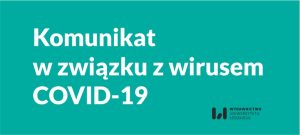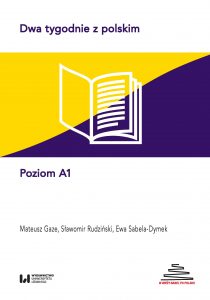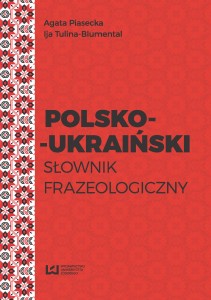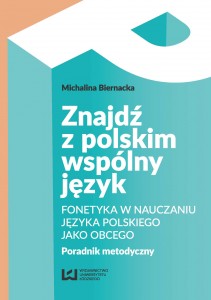European Spatial Research and Policy | Vol. 30 No. 1 (2023)
Opublikowano: 15 września 2023
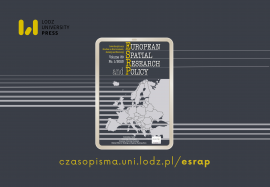
European Spatial Research and Policy is an international review concerned with the problems of social and economic space organisation at a local, regional and supranational level. The journal comprising both theoretical and empirical aspects of spatial analyses is aimed at academics, policy-makers and practitioners interested in a broad range of spatial development in contemporary Europe. The scope of the journal is defined by the concepts of space, environment, society and economy rather than by names of specific disciplines. Its main areas of interest include i.a. regional policy, spatial planning, European integration processes, locational studies, labour market developments, foreign investments, environmental problems and other crucial issues influencing the shape of contemporary and future European space.
Contributions prepared by geographers and regional scientists, as well as economists, planners, architects, sociologists and historians who undertake spatial research within their respective disciplines reflect the interdisciplinary character of the review. European Spatial Research and Policy is published annually as one volume consisting of two issues and includes refereed articles, notes, commentaries, reports and book reviews. The journal, being itself a result of close academic links of scholars and universities representing different countries, is an important forum for international exchange of information and opinions in the field of spatial studies.
By the decision of the Polish Ministry of Science and Higher Education, European Spatial Research and Policy is included in the list of ranked scientific journals and is currently awarded 100 points (2023).
Modelling the regional variability of building activity in Greece: A multi-level multinomial logistic regression approach
Dimitrios Kantianis, Serafeim Polyzos, Dimitrios Tsiotas
This paper studies spatial differences in the fluctuations of the regional building activity in Greece, by developing a composite multinomial logistic regression model expressing the building activity’s variability in socio-economic terms. The results show that the variability in building activity is related to economies of scale within the construction sector, along with the performance of two other Greek economy’s major sectors, i.e., tourism and tertiary, in highlighting a dependence on the prime drivers of economic and regional development. Overall, the research provides empirical evidence on the macro-economic modelling of spatial demand, based on a proxy incorporating all aspects of human activity in the geographical space.
Centres and peripheries reflected in distribution patterns of EU cohesion policy funding on the example of the Baranya county, Hungary
Zoltán Pámer
The cohesion policy of the EU plays a key role in overcoming territorial disparities. The emergence of the policy was accompanied by a debate on a place-neutral or place-based approach. In the case of Hungary, the first fully implemented programming period of 2007−2013 and the still ongoing 2014−2020 period provide a good tool for comparison. Overall, the aim of the research was to provide an in-depth look into the change of territorial patterns of EU-funding distribution, on the example of the Baranya county, being part of one of the 20 least developed regions of the EU; how territorial patterns of EU funding changed between the two periods and how the county-level territorial objectives were reflected in the funding patters.
The introduction of the paper provides a review of relevant literature on EU cohesion policy, then the selection of the Baranya county as a case study is justified. The following part shortly presents the framework of regional development in Hungary, highlighting the relevant documents for the case study county. The presentation of the empirical study is divided into two parts. First, as qualitative research perceptions of the stakeholders of the key levels of regional policy decision-making are analysed. Second, a quantitative analysis of the territorial funding patterns of the two periods is presented, in light of established territorial objectives.
The mapping of forms of spatial planning: An instrument-oriented tool for the international comparison of spatial planning activities
Géza Salamin
The paper makes a contribution to European comparative research on spatial planning by providing an instrument-oriented methodological framework for forms of planning. Based on the main efforts to date, the main challenges of comparative research on European planning systems are identified. The author’s comparative four-dimensional model and related visual tool can be used to bridge different national languages of planning and compare various spatial forms of planning. With the tool, the nature of planning regimes, specific plans, and other planning-related activities can be identified in accordance with the dimensions of Motivation, Geography, Scope, and Instruments, making them comparable.
The role of social movements in transformative tourism development: Lessons learnt from a case study in Lithuania
Dalia Vidickiene, Zivile Gedminaite-Raudone, Vitalija Simonaityte, Rita Lankauskiene
This study responds to the need for theoretical and empirical research on value co-creation in tourism. Previous research has mainly adopted a perspective centred on the collaborative relationships between tourists and service providers, i.e., has been focused on a relationship called ‘one-to-one’. According to the emerging trends in value co-creation theory, value co-creation activities, however, are more complex. The research provides empirical support to previous general conceptualisations of value-creation and brings some new insights to value co-creation involving multiple actors from a perspective called ‘many-to-one’. The research is focused on the role of the most active stakeholder in transformative tourism that represents ‘many’ actors as a whole – the social movement. The paper describes a case on a transformative tourism initiative that is a particularly rich setting for expanding value-cocreation in a network of activities’ research for a more complex understanding of value networks in the tourism sector. The case study examines extensively the role of social movements in transformative tourism development through value co-creation. The findings develop a more complex value co-creation mechanism and enable the conceptualisation of the value co-creation process by identifying drivers of collaboration, value co-creation activities, and outcomes. The research demonstrates the potential of social movements for the development of transformative tourism in value co-creation and has implications for both entrepreneurs and policymakers seeking to develop transformative tourism and leaders of a new generation of social movements aiming to transform society.
The future of wellness tourism after COVID-19
Andressa Piatto Clerici, Catriona Murphy, Nuno Miguel Castanheira Almeida
The tourism industry has drastically reduced its activity since the emergence of the COVID-19 pandemic, yet there has been an undeniable rise in demand for wellness tourism which now represents one of the fastest growing tourism market segments globally. Admittedly, while the COVID-19 pandemic has delayed the forecasted wellness tourism growth trend, this segment has stood fast at USD 4.4 trillion in 2020 while global GDP declined by 2.8%. In 2020, the wellness tourism market was valued at USD 436 billion, projected to rise to USD 816 billion by 2022 with more than 1.2 billion trips being realised and anticipated growth estimated at USD 1.0 trillion by 2025. The main purpose of this study is to ascertain the future trends of wellness tourism, and to investigate the extent to which this upward growth trend can be sustainably maintained post COVID-19. A qualitative structured interview methodology was employed using email interviews comprising six pre-determined questions with three expert wellness tourism participants. These expert interviewees were based in countries that were severely impacted by COVID-19, namely Brazil, USA, and Portugal. NVivo Nudist was used to analyse the primary data collected. In validating previous research findings, this study indicates that despite the challenges facing the sector, upward growth patterns in wellness tourism will continue beyond the COVID-19 pandemic.
Competing landscapes of commerce and tourism: Critical relations and possible strategies in Venice’s historical city
Cristina Catalanotti
This article investigates the relationship between tourism-related economic activities and neighbourhood shops in the historical centre of Venice, in terms of both their spatial distribution and the conflictual uses of the city. In questioning how to inhabit and revitalise the city through commercial activities, the paper wishes to contribute to the discussion proposed in the special number, by presenting a specific yet paradigmatic context and by reflecting on urban regeneration and revitalisation bottom-up practices. The research first unfolds the landscapes of commerce in the city and identifies polarised geographies of tourism-related activities focusing on retail and catering businesses; secondly, it interrogates spatialised strategies that local actors are developing to reflect on their relation with urban planning and policy design processes.
AHP and TOPSIS as methods assessing the attractiveness of urban parks: The case of Lodz, Poland
Marcin Feltynowski, Agnieszka Rzeńca, Piotr Rzeńca, Wiktor Wróblewski
Urban parks are significant elements that improve the quality of life in built-up areas. This research aims to identify the most attractive park in Lodz, Poland, using a set of assessment indicators. In our opinion, the decision-making process in assessing the attractiveness of urban parks may be assisted by Multiple Criteria Decision Analysis (MCDA). Two methods were chosen from the MCDA group, namely the Analytic Hierarchy Process (AHP) and the Technique for Order Preference by Similarity to Ideal Solution (TOPSIS). The research shows that the proposed methods reveal which park needs support and calls for investment.
Stadt, Land, Klima: A review of recent German contributions to urban studies with a review of: Uwe PRELL, Die Stadt, Sascha HENNINGER and Stephan WEBER, Stadtklima, and Freerk BAUMANN, Und jetzt aufs Land. Wie die Natur unsere Gesundheit fördert
Gert-Jan Hospers
Komentarze
Ten post dostępny jest także w języku: angielski


